- Since last summer, the majority of Covid-19 hospitalizations in North Carolina have been to people fully vaccinated or boosted against Covid
- Especially in recent weeks, fully vaccinated or boosted individuals comprise the majority of Covid patients in intensive care units in North Carolina hospitals
- On March 29, the state Department of Health and Human Services suddenly announced it would no longer report hospitalizations by vaccination status
Once again, the North Carolina Department of Health and Human Services (DHHS) has stopped publishing certain Covid-19 statistics once they became politically inconvenient. This time, it’s the tracking of Covid hospitalizations and intensive care unit (ICU) hospitalizations by vaccination status (whether fully vaccinated, boosted, or not).
Slipshod, changeable data and metrics have always been a feature of Gov. Roy Cooper’s administration’s approach to the pandemic — and they always seem timed to cover for Cooper’s tyrannical excesses, their pharmaceutical and nonpharmaceutical interventions, and their failures.
It seems necessary to provide a few examples before going into the latest halt on data.
Delayed lockdown, long delayed reopening, and phony “reopening” metrics
Cooper’s statewide lockdown order for “thirty days … to slow the spread” was to end on April 29, 2020. The week before, Cooper announced that “we have flattened the curve.” Flattening the curve was Cooper’s stated rationale for all his Covid orders. Even so, Cooper didn’t announce reopening. Instead, he announced delaying reopening till May 8, plus a three-phased plan for reopening in a matter of weeks.
Cooper and DHHS head Mandy Cohen also announced “metrics” for reopening: cases, hospitalizations, and percent of tests returning positive (which was a metric they abused deceitfully — it was supposed to indicate whether the state was testing enough people, not used to show that suspected sicknesses weren’t actually Covid). The ensuing months would show that Cooper never intended to reopen the state fully.
On August 5, 2020, Cooper pulled a similar stunt — he announced the metrics he had set had stabilized, but then refused to relax his orders. He justified this betrayal by saying that (emphasis added) “stabilized trends are good but fragile.” A week later, on August 12 DHHS announced a major correction in its Total PCR tests (specimens), resulting in a decrease of more than 220,000 reported tests and revising its testing numbers back to March 16.
On September 21, 2020, the John Locke Foundation published a data analysis titled “By Gov. Cooper’s own standards, NC should be open.” The analysis showed that all of Cooper’s metrics for reopening had not only been met, but had been showing prolonged downward trends for weeks. In response, on September 25 the Cooper DHHS suddenly started reporting “probable cases” from antigen tests, a change that caused a one-day increase in cases by well over 6,000 — even though the actual, probable cases added extended back over several months. The change upended data tracking.
Over the ensuing months DHHS would not infrequently announce revisions and data dumps. After ending its “grading” of state data, the COVID Tracking Project cited by DHHS cautioned researchers to “Interpret North Carolina’s historic data with caution.” In an especially notorious data dump on January 13, 2022, DHHS added several weeks’ worth of previously unreported tests into the system, resulting in 44,833 cases added that day — most which had occurred weeks ago. WRAL then ran this “Breaking News” headline in red:

Withdrawn reports and pulled data
Availability of Covid vaccines brought about more bad data and reversals from the Cooper administration. On July 29 Cooper announced an executive order to force Covid vaccines on state employees and contractors and “strongly encourage” private businesses to do the same for theirs. In late July 2022, DHHS officials told media that “unvaccinated people account for 99 percent of the state’s COVID-19 cases since May” — which they had to know was not true. DHHS’s own data showed that by late July cases to vaccinated individuals hovered close to 20%.
Those statistics were to grow increasingly problematic for DHHS and Cooper, as the percentage of post-vaccination cases would keep on growing.
On October 4, 2022, DHHS published a report on Covid reinfections — i.e., how many known infections to North Carolinians were subsequent infections to people who had already suffered a Covid infection. With those data along with DHHS’s current case count and post-vaccination infection data, one could show how North Carolina’s data were in line with the reams of research attesting to the relative strength of naturally acquired immunity to Covid in comparison with vaccine-induced immunity (e.g., by April 2022, the post-vaccination infection rate was 8.8 percent, whereas the reinfection rate to unvaccinated individuals was 3.5 percent.)
Initially, the reinfection report said there had been 10,812 reinfections through September 21, 2021. The report also showed that, in that last week, there had been about 500 reinfections:
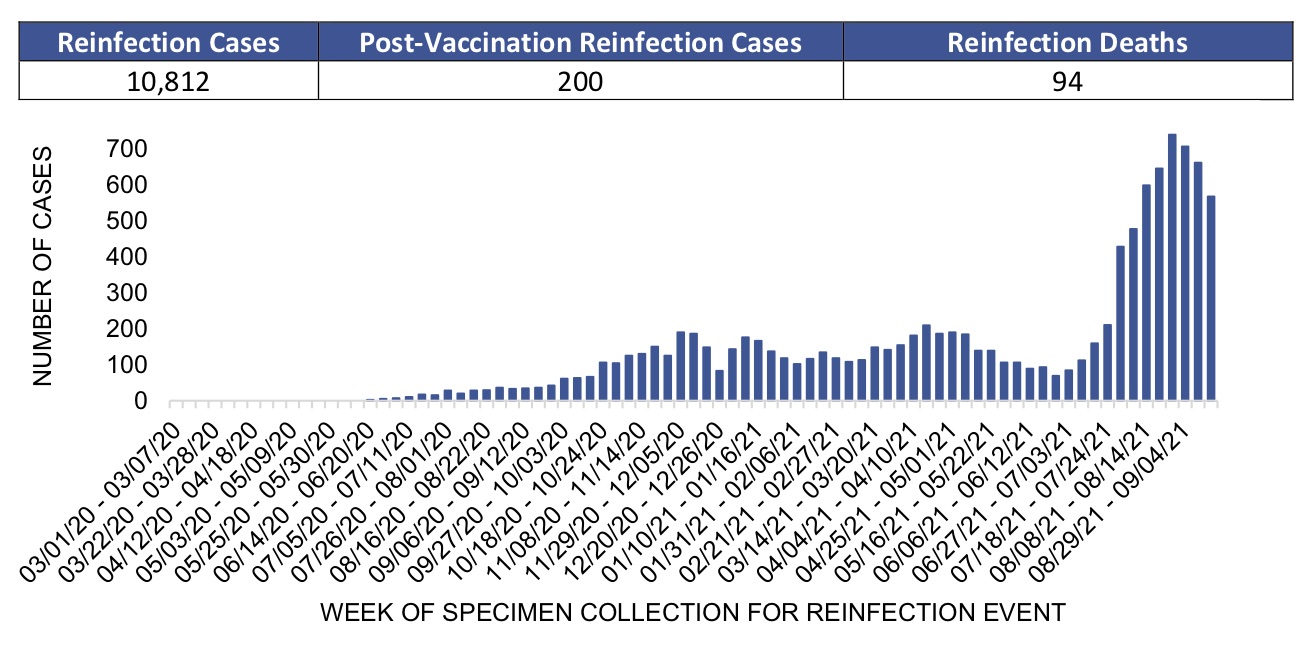
When DHHS withdrew that report on April 13, 2022, their data showed there had been not 500, but three reinfections reported that week:
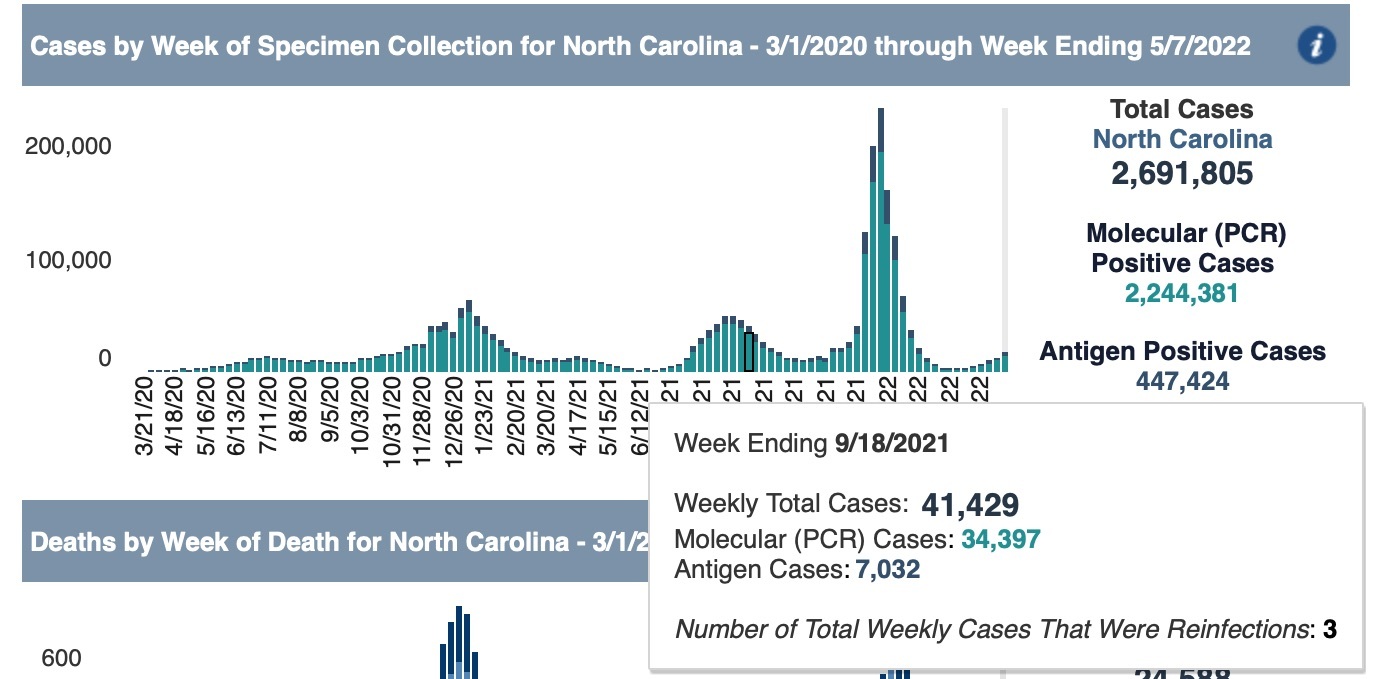
Also around that time, DHHS stopped reporting cases by vaccination status, which by that time showed that the majority of cases — 54 percent in the final reported week — were occurring to fully vaccinated or boosted individuals. Leading up to the decision to stop publishing those data, which were increasingly contradictory to the Cooper administration’s aims, reinfections were a fraction of the size of post-vaccination infections. DHHS pulled the slides.
New cases of Covid-19 by vaccination status, Jan. 29–Feb. 26, 2022 (prior to DHHS stopping publication of those data)
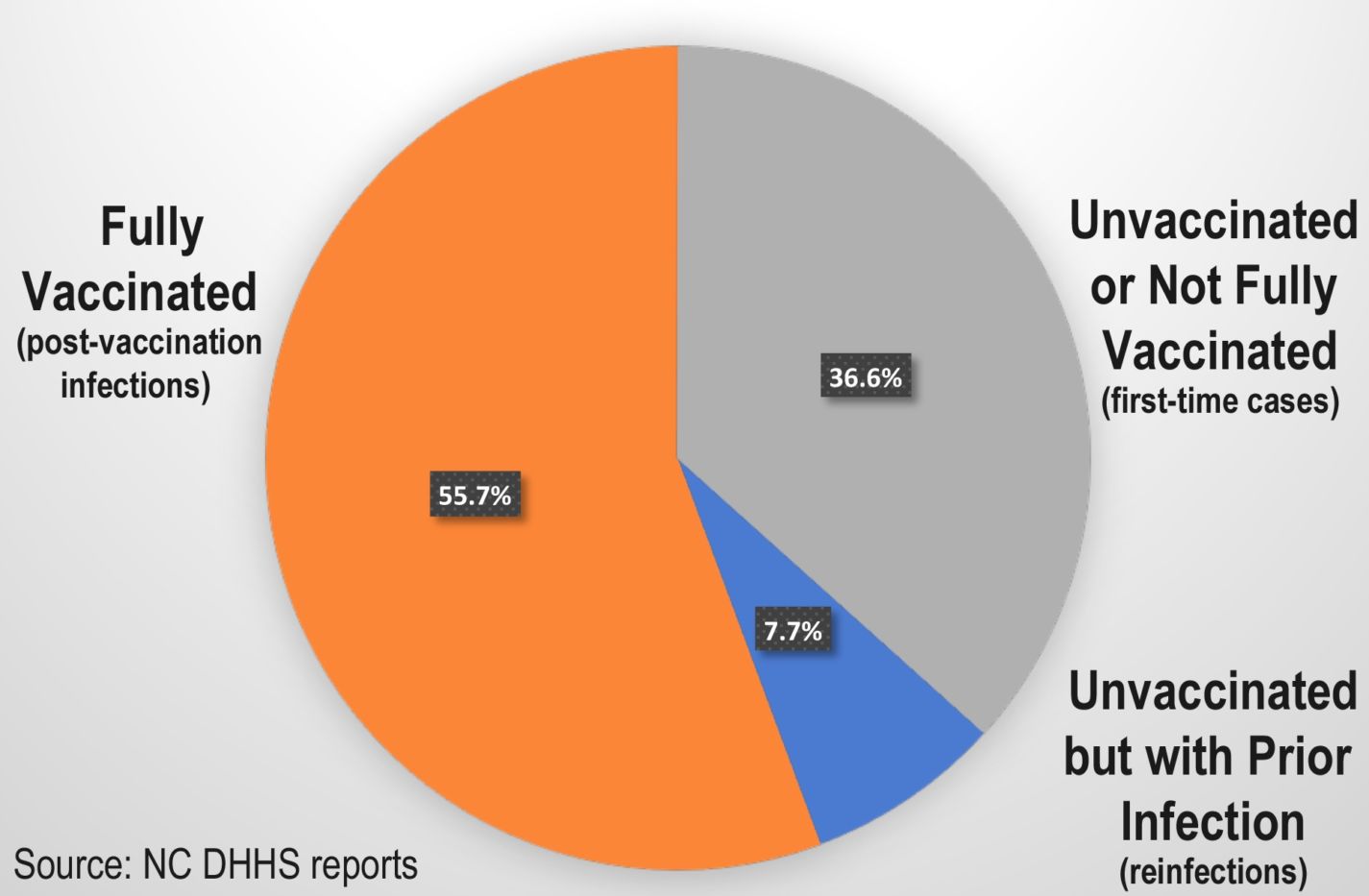
March 2023: Pull those slides, too
Nevertheless, DHHS continued to publish data on hospitalizations by vaccination status. The Cooper administration (as well as the Centers for Disease Control and Prevention and the Biden White House) has now settled on messaging that while vaccination can’t prevent you from contracting the virus, it will protect you from “getting very sick” and needing hospitalization. They also question the long-term durability of naturally acquired immunity and state that “staying up to date” on the vaccine boosters is the “best protection against serious illness from COVID-19.”
It helped that the official data was always vague on what a Covid hospitalization meant. While people in general assumed a “Covid hospitalization” meant someone had a Covid infection so severe that he required hospitalization, what it really meant is that someone was in the hospital and had tested positive for Covid as part of entry protocol. Even now the data don’t differentiate between hospitalized with vs. hospitalized for Covid.
In late March 2022, there were decidedly more Covid hospitalizations among unvaccinated individuals (60.18 percent) than vaccinated or boosted individuals (39.82 percent), even more so with respect to the more serious hospitalizations (those in intensive care units, or ICU hospitalizations — 66.67 percent vs 33.33 percent):
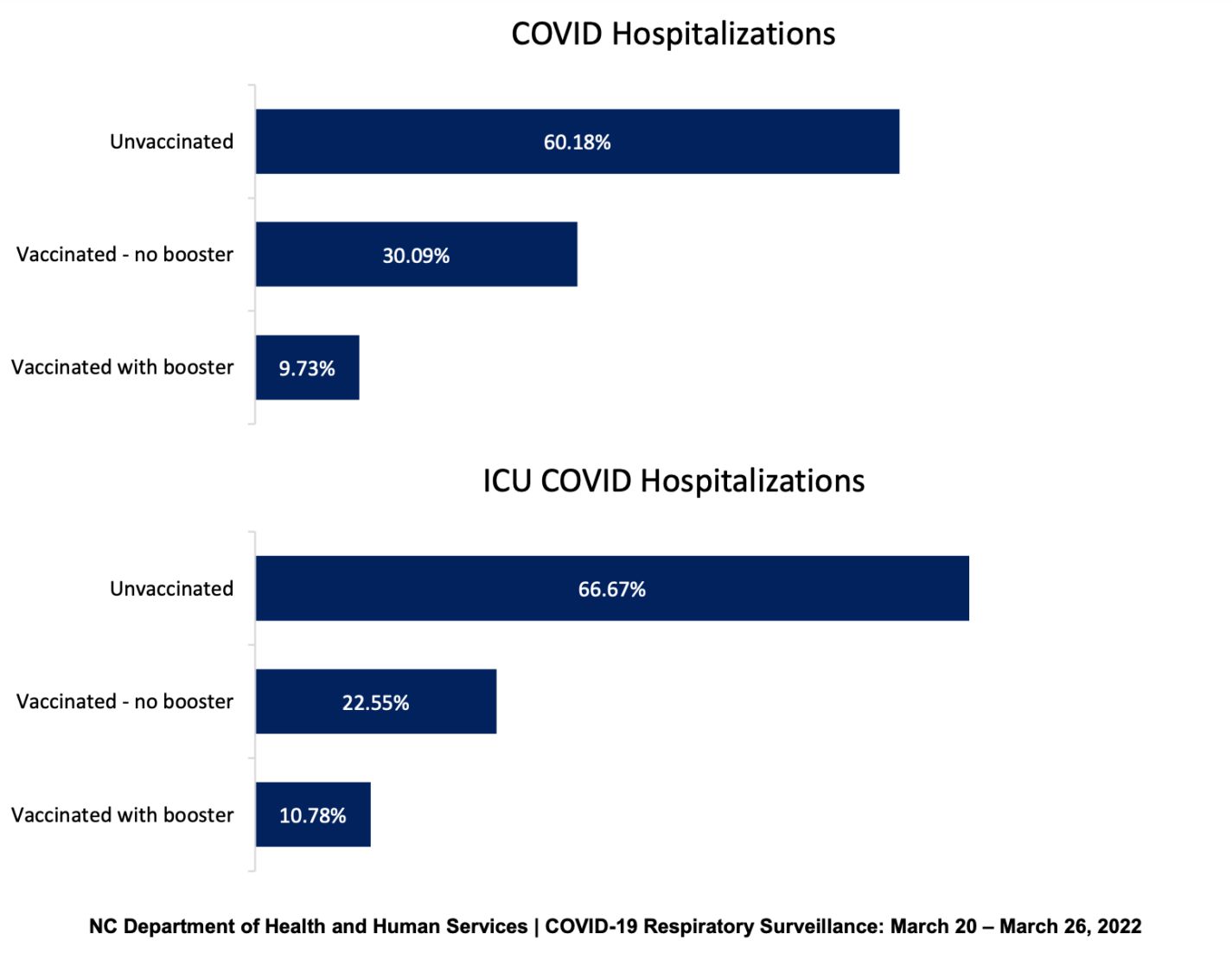
Those data have also trended in an increasingly problematic way for DHHS and Cooper, however.
By May 2022, unvaccinated individuals had become slight majorities among Covid hospitalizations and ICU hospitalizations:
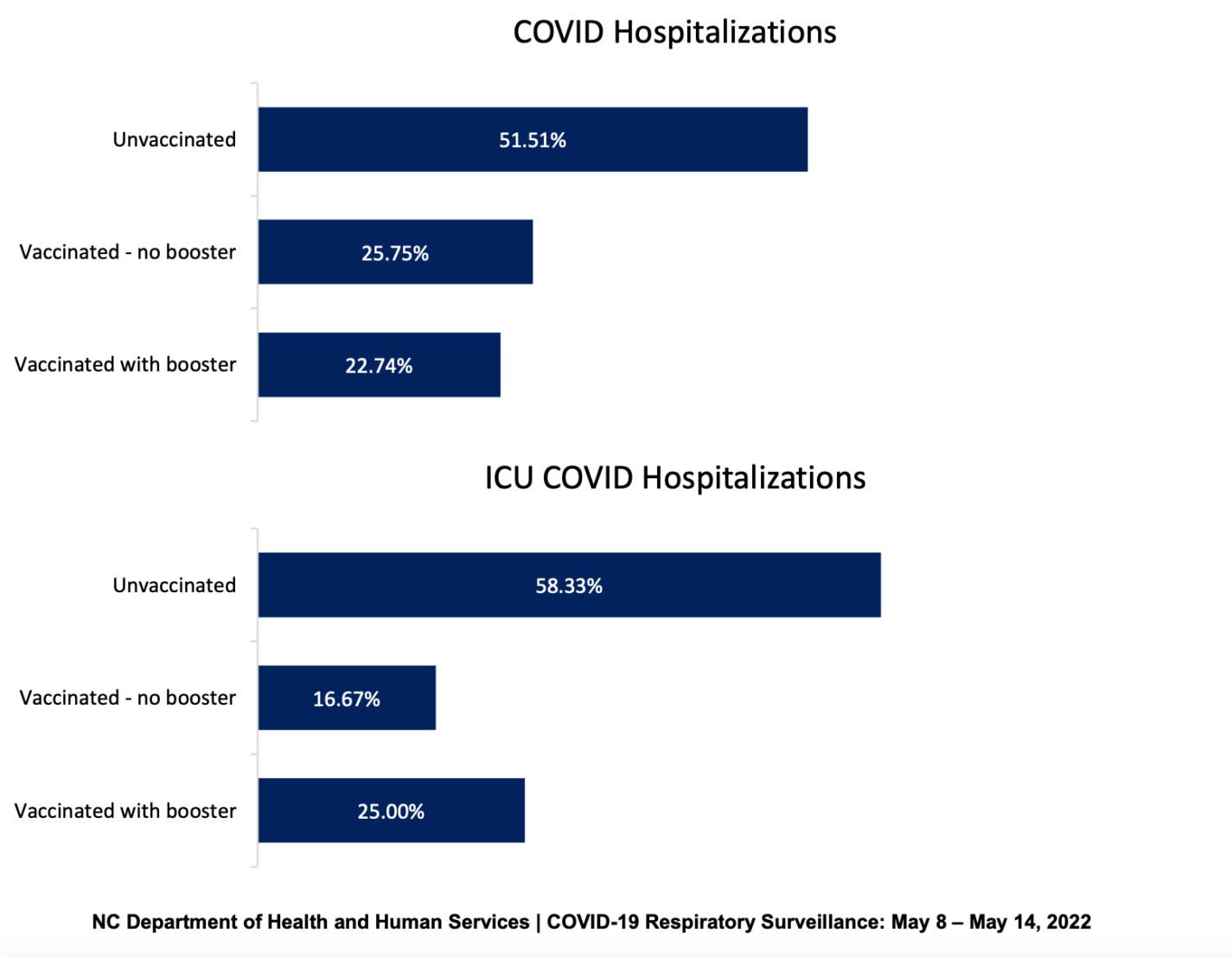
Soon more hospitalizations were occurring to fully vaccinated or boosted individuals. A slide from July 2022 showed:
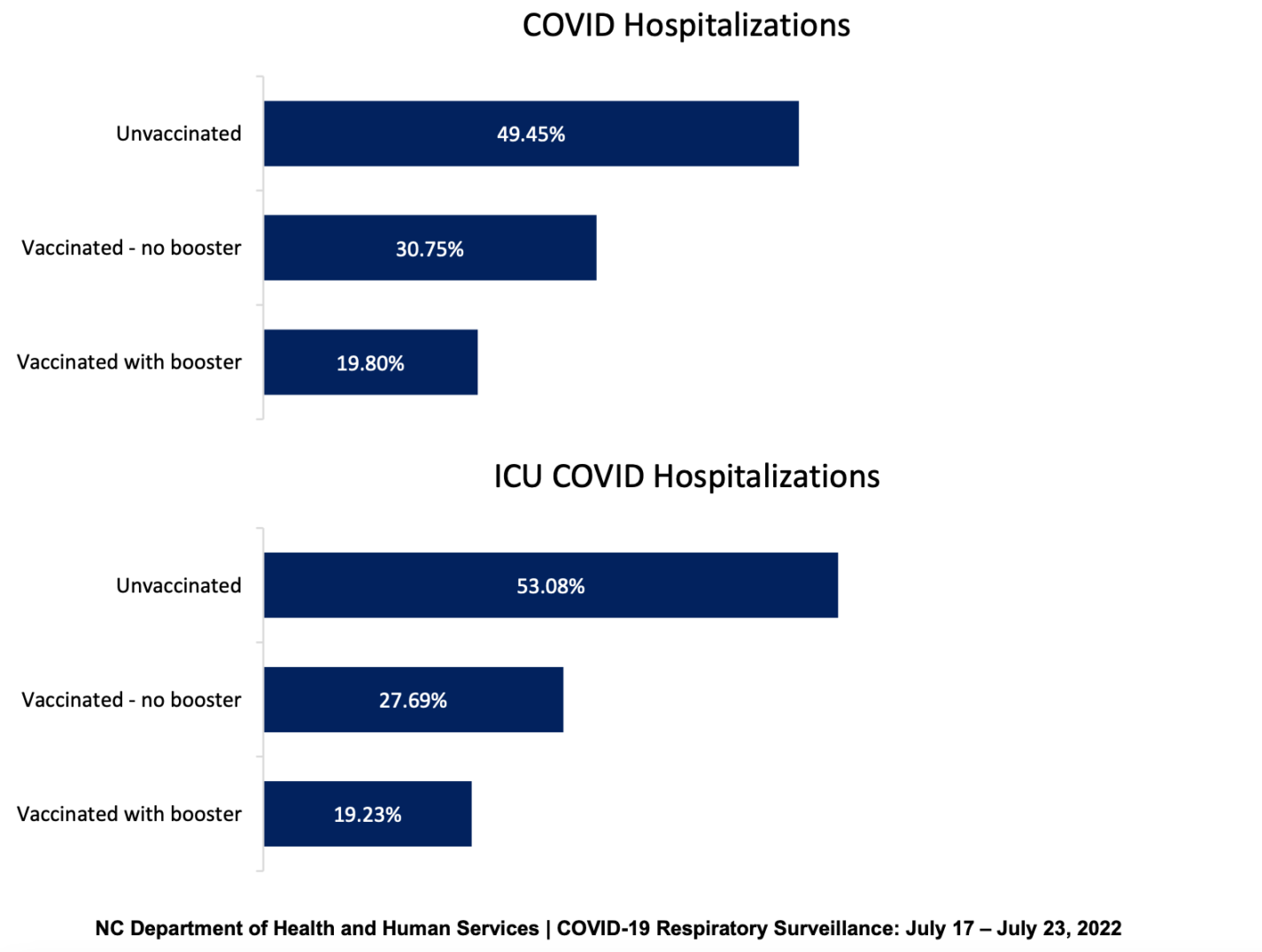
Then there were weeks with more ICU hospitalizations occurring to fully vaccinated or boosted individuals. For example, the next two graphs show two different weeks in September 2022:
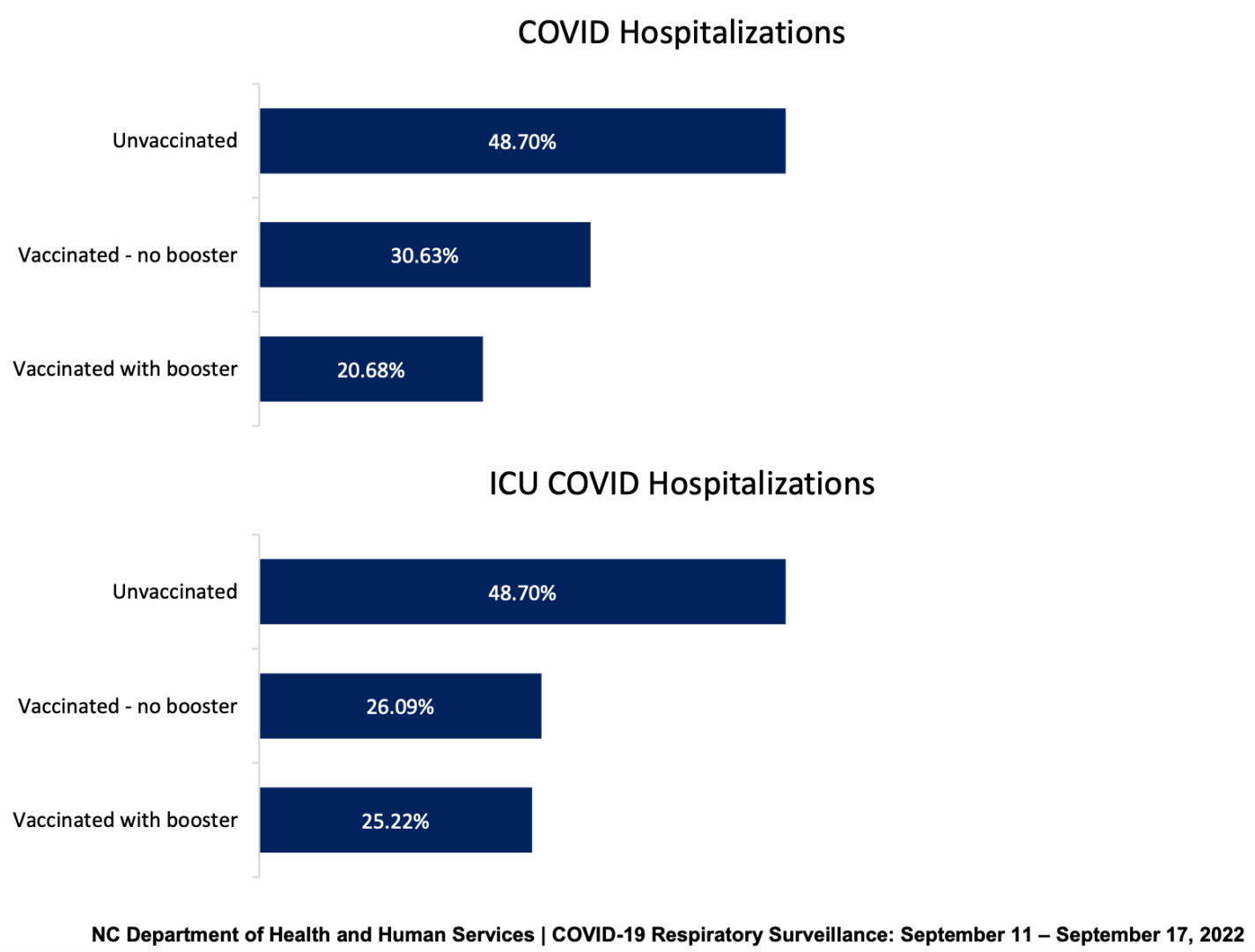
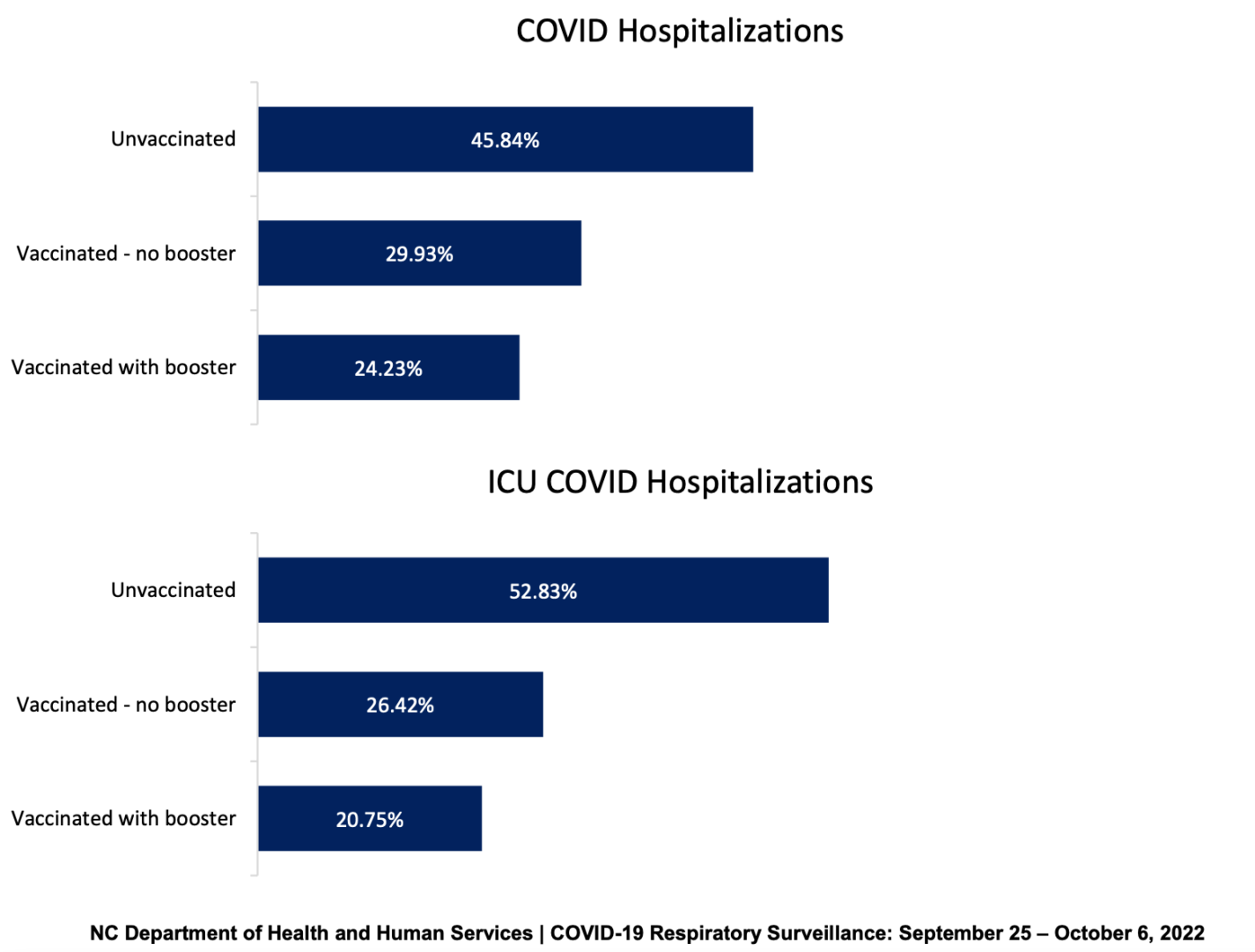
This dynamic among ICU hospitalizations would play out over ensuing months. Meanwhile, fully vaccinated or boosted individuals would consistently be responsible for the majority of Covid hospitalizations.
In November 2022, DHHS changed how it reported its Respiratory Virus Surveillance, once again making it harder for concerned citizens to track individual reports. DHHS created a dashboard that changed week to week with the previous week’s information disappearing:
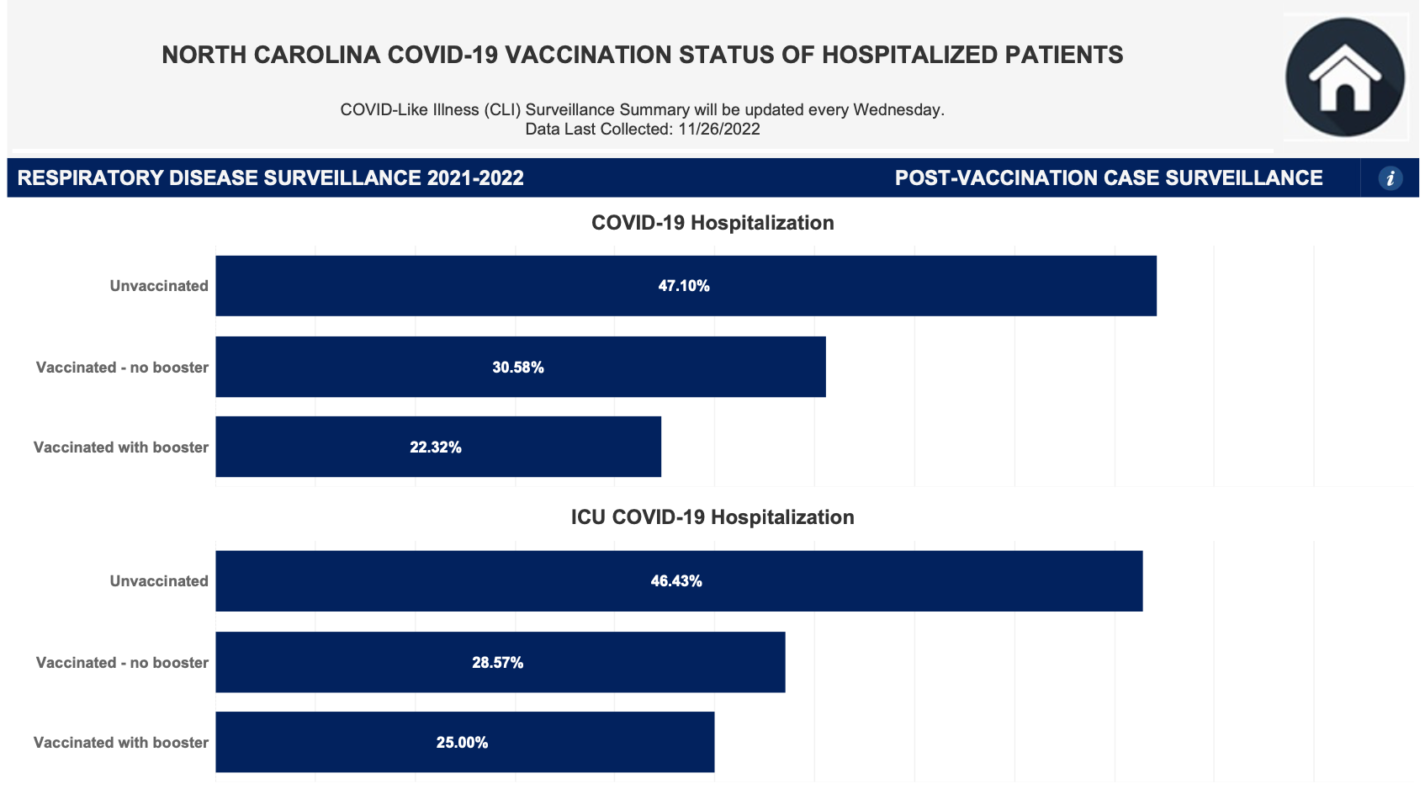
December 2022–January 2023 saw unvaccinated individuals being responsible for the majority of ICU hospitalizations:
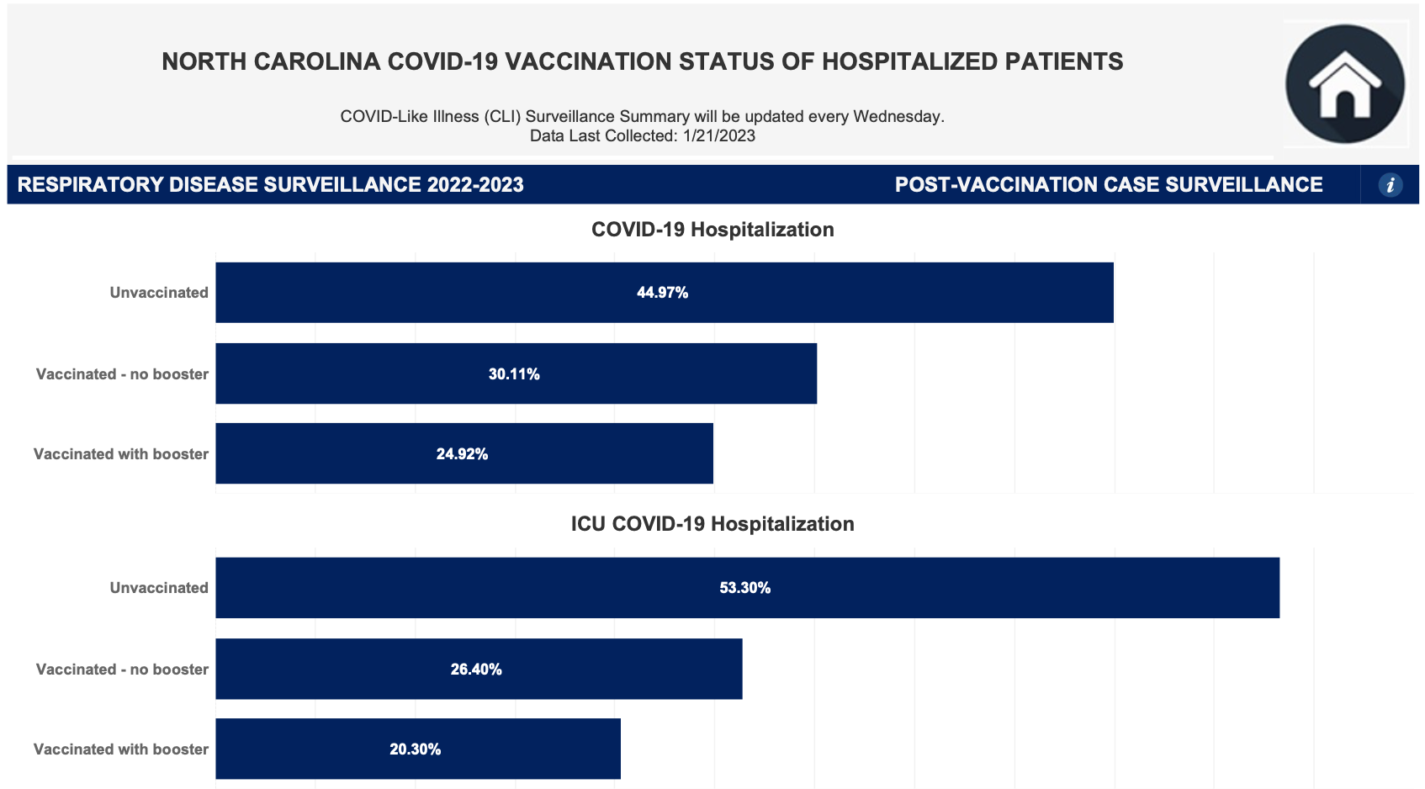
By February 2023 and on through March, however, fully vaccinated or boosted individuals were responsible for the majority of ICU hospitalizations:
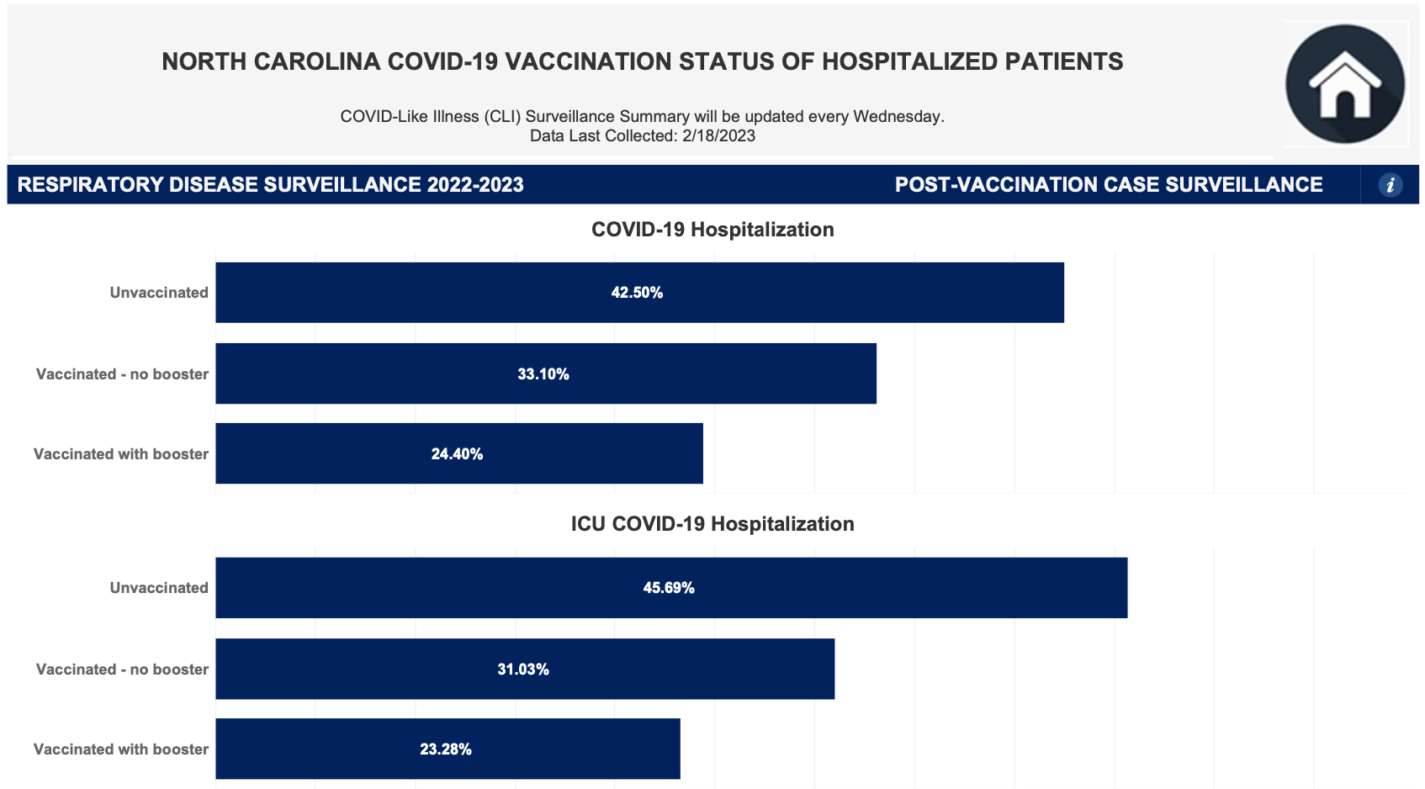
On March 29, 2023, DHHS suddenly announced it would no longer report hospitalizations by vaccination status. Here is the final slide:
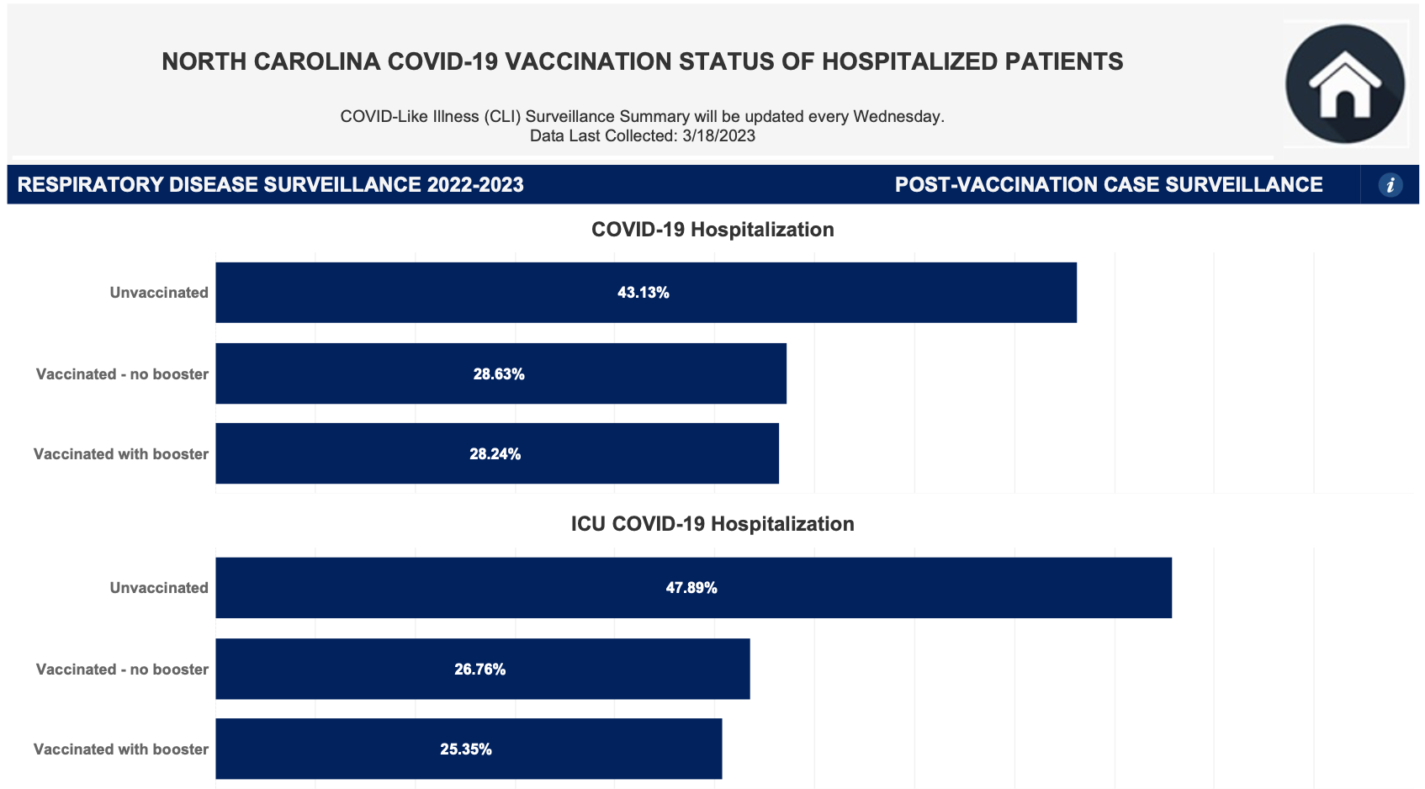
Among other trends in late February–March 2023, the percentage of hospitalizations and ICU hospitalizations of boosted individuals was coming very, very close to surpassing that of fully vaccinated individuals who had not received boosters.
Of course it’s unknowable from this vantage point whether those trends would persist, let alone how much of the Covid hospitalizations and ICU hospitalizations reflected individuals hospitalized for Covid. Counter to what one would expect from a public health agency with a mission to inform the public rather than protect certain political outcomes, DHHS’s actions prevent those things from becoming known.


